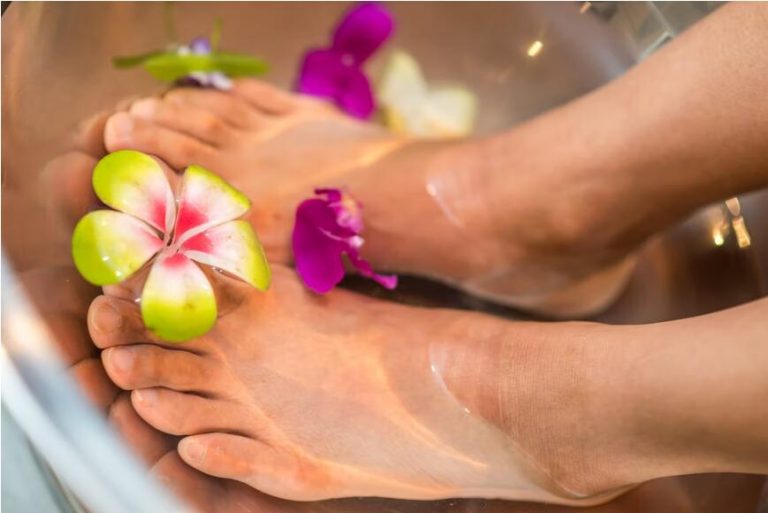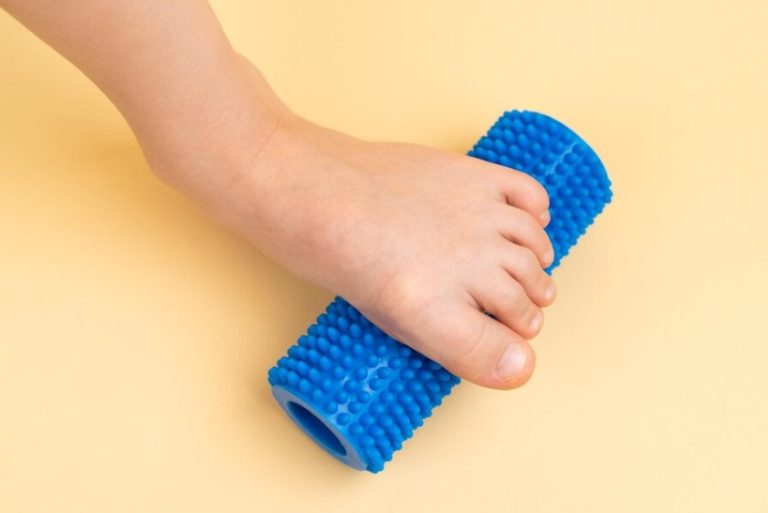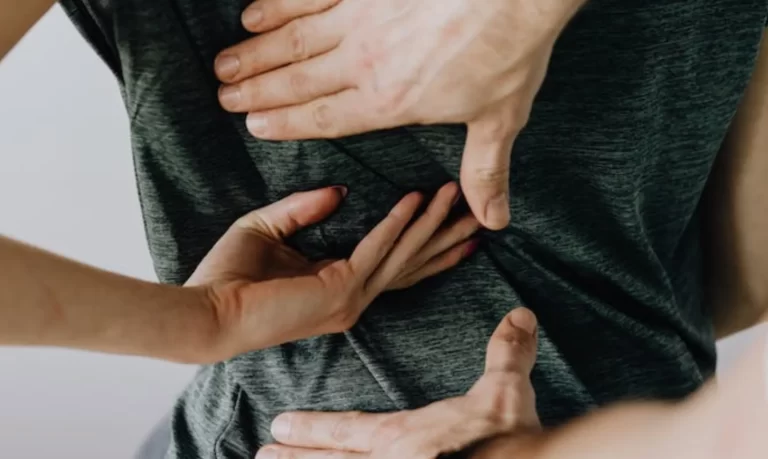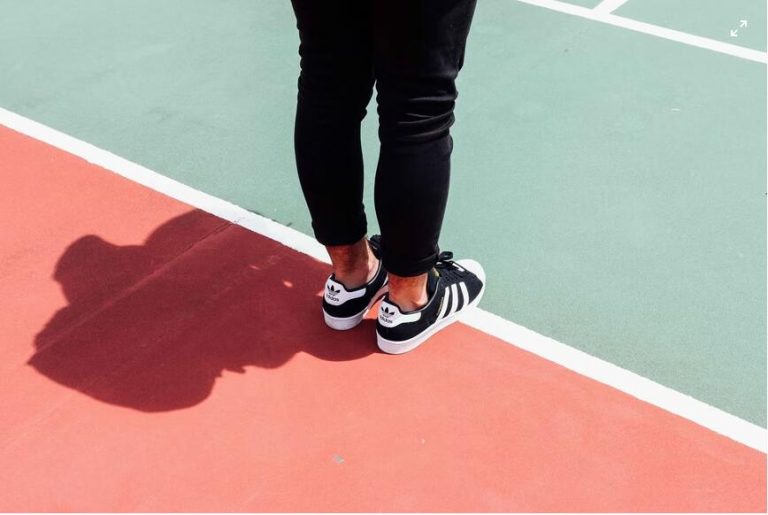Pamper Your Feet: The Best Insoles for Elderly Feet
Why Elderly People Need Special Insoles
As we age, our feet go through many changes that can lead to pain, limited mobility, and increased risk of injury. Having proper insoles and orthotics can provide essential support and relief.
The padding on the bottom of the feet starts to thin out as we get older. This natural fat padding acts as a shock absorber, so losing it can mean feeling every rock and bump on hard floors. The bones in the feet also begin to break down for some people leading to conditions like arthritis and bone spurs.

On top of anatomical changes, many elderly individuals deal with diabetes, poor circulation, plantar fasciitis, and neuropathy. These conditions can cause numbness, tingling, sores, and discomfort. Proper cushioned insoles can reduce irritation and inflammation caused by these issues.
Additionally, having good arch support is incredibly important. Fallen arches or flat feet become increasingly common with age. This allows the ankles to roll inward, putting pressure on muscles and joints. Custom orthotics with arch support prevent overpronation, relieve pain, and provide stability.
Wearing protective, supportive insoles can make standing and walking much easier for the elderly. They help reduce fatigue, improve balance and posture, absorb shock, and accommodate foot conditions. For those with chronic pain and mobility issues, a good insole can be life-changing.
5 Top best Insoles for Elderly
Elderly individuals can benefit from using high quality insoles specifically designed to provide support and relieve pain. Here are some top recommended brands to consider:
Romaningfeet Orthotic Insole For Elderly
Roamingfeet is a leading brand when it comes to foot care and orthopedic products. Their insoles are designed by podiatrists and provide excellent arch support, shock absorption, and cushioning.
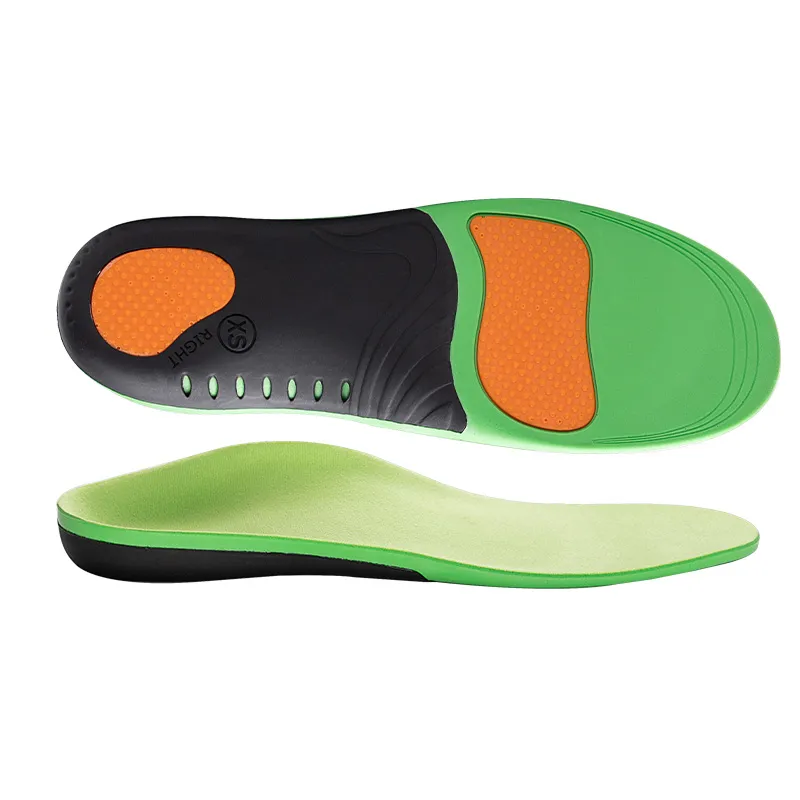
Key Features:
Arch Support: Precision-engineered to help correct flat feet.
Cushioning: High-density foam layers for ultimate comfort.
Material: Soft, skin-friendly fabric top with anti-microbial properties.
Size Options: Available in multiple sizes that can be trimmed for a perfect fit.
Benefits: Tailored for those suffering from arch discomfort and flat feet. The high-density foam provides a cushioning effect that reduces the impact on the joints.
Pros:
Excellent arch support
Customizable size
Durable material
Anti-microbial top layer
Cons:
Initial firmness may require a break-in period
May be too thick for some shoe types
Superfeet
Superfeet offers premium insoles to provide pain relief, support, and comfort. Their insoles are made to last and come in a variety of types.

Key Features:
Flexibility: Adapts to foot movement, offering a personalized fit.
Pressure Relief: Memory foam evenly distributes body weight.
Material: High-quality memory foam.
Size Options: Wide range of sizes, easily trimmable.
Benefits: Perfect for individuals with painful pressure points. The flexible, memory foam material conforms to the foot, providing a custom fit and even weight distribution
Pros:
Adaptive fit
Excellent pressure relief
Durable memory foam
Customizable sizes
Cons:
May retain heat, unsuitable for those with sweaty feet
Memory foam may compress over time
Spenco
Spenco creates insoles for a range of uses, from athletic performance to orthotic support. Their insoles provide cushioning and work to absorb impact.
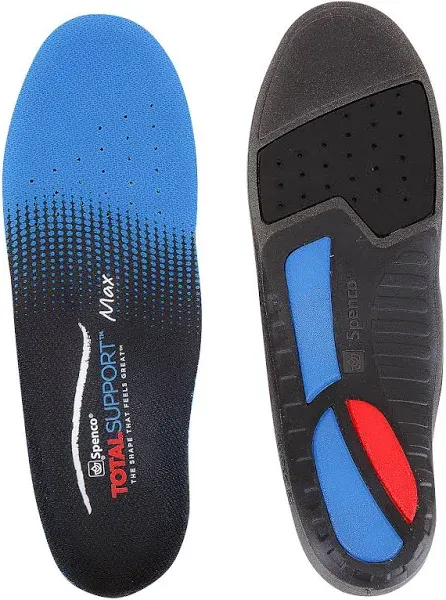
Key Features:
Arch Support: Robust support for reducing arch pain.
Heel Cup: Designed for extra stability.
Material: Breathable, lightweight fabric.
Easy to Insert and Remove: Designed for quick adjustments.
Benefits: Ideal for elders needing additional support for overpronation or flat feet. The insoles promote better posture and balance.
Pros:
Strong arch support reduces foot fatigue.
Enhances walking stability.
Lightweight material does not add bulk to shoes.
Easily swapped between shoes.
Cons:
May feel too rigid for those unused to orthotic support.
Limited cushioning in comparison to gel-based insoles.
Powerstep
Powerstep is known for making quality orthotic insoles. Their insoles help relieve common foot issues and provide stability. Good options include:

Key Features:
Cushioning: Extra soft padding for shock absorption.
Material: Microfiber top layer for comfort.
Flexibility: Soft material adapts to foot shape.
Breathability: Microfiber material wicks away moisture.
Benefits: Designed for seniors with sensitive feet, offering a gentle cushion and reducing the risk of skin irritation.
Pros:
Superior comfort for all-day wear.
Prevents overheating and perspiration.
Adapts well to various foot shapes.
Ideal for diabetic seniors with sensitive feet.
Cons:
May lack adequate support for severe arch-related issues.
Softness could compromise long-term durability.
Sof Sole
Sof Sole offers athletic and casual insoles to absorb shock and keep feet comfortable.
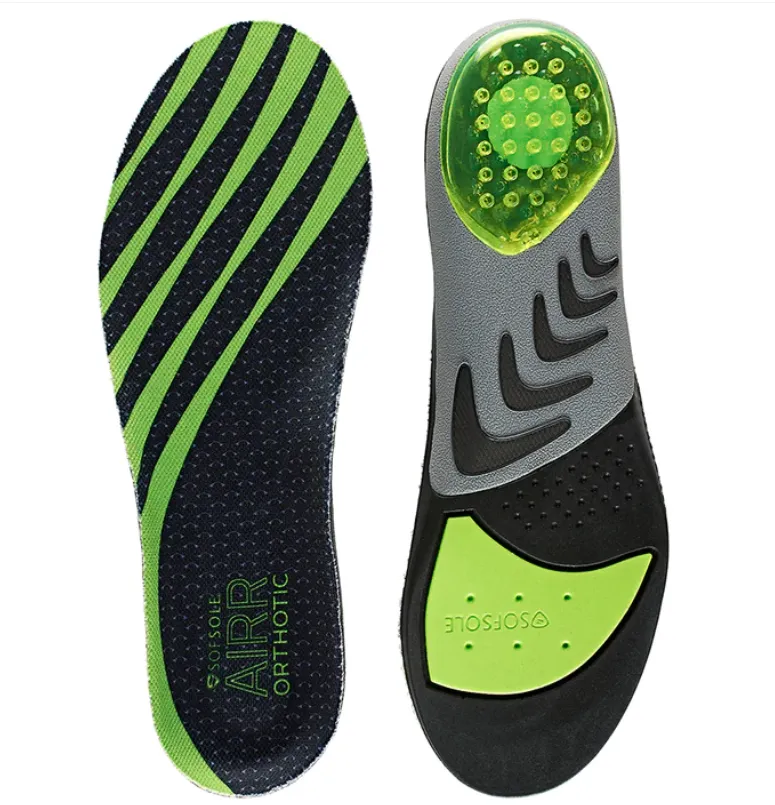
Key Features:
Pressure Relief: Targeted cushioning in key areas.
Heel Cup: Provides gentle motion control.
Size Options: Comprehensive size range, trim-to-fit.
Flexibility: Balances support with movement freedom.
Benefits: Great for alleviating pressure points and enhancing foot alignment for a more natural walking experience.
Pros:
Reduces pressure on the forefoot and heel.
Supports natural foot alignment.
Fits a wide array of shoe types.
Helps in managing plantar fasciitis symptoms.
Cons:
Not as durable as some firmer options.
Some users may find trimming for fit inconvenient.
There are plenty of quality insole brands to choose from. Look for insoles designed specifically for seniors and consult a podiatrist for personalized recommendations. The right insoles can provide essential support and pain relief for elderly feet.
Features to Look for in Insoles for Elderly Feet
The key features to look for when choosing insoles for elderly feet include:
Cushioning and Shock Absorption
Elderly feet need extra cushioning and shock absorption. With age, the fat pads on the bottom of the feet tend to thin out, reducing natural cushioning. Joints and bones also become more prone to injury and arthritis. Select insoles with ample cushioning in the heel and forefoot to absorb impact. This helps reduce pain and provides comfortable padding for sensitive feet. Materials like gel, foam, and air provide excellent shock absorption.
Arch Support
Arch support is vital for elderly feet. As we age, arches tend to flatten more, putting strain on the plantar fascia and heel. This can cause arch and heel pain. Supportive insoles with contoured arches help realign the feet, offloading pressure. They also provide stability and even distribution of weight. Lightweight materials like graphite or plastic work well for arch support.
Accommodates Orthotics
Many elderly individuals use custom orthotics for foot conditions like plantar fasciitis or diabetes. It’s important to select insoles that can accommodate orthotics. Some are designed with a removable top layer or have space to insert orthotics. This provides the benefits of both orthotics and insoles.
Anti-Microbial and Odor Prevention
Insoles that inhibit microbial growth and odors are ideal for elderly feet. Sweaty feet are common with aging. Antimicrobial materials like charcoal powder, silver fibers, or bamboo extract help prevent bacteria and fungi growth. This keeps feet dry and odor-free. Breathable top fabrics also aid airflow.
Top Materials for Elderly Insoles
When choosing insoles for seniors, pay close attention to the materials used. Some offer better cushioning and support for aging feet. Here are top options:
Memory Foam
Memory foam molds to the unique shape of the foot and redistributes weight evenly. It provides cushioning for pressure points like the heel and balls of the feet. Memory foam insoles help absorb shock and reduce pain in the feet, knees, hips and back. They also retain their shape over time.
Gel
Gel insoles have built-in cushions that conform to the foot. The gel evenly distributes weight and absorbs impact. This helps relieve pain and pressure on joints. Gel stays cool, so it prevents sweaty feet. The material is also antimicrobial, so it resists bacteria and odors.
Cork
Cork naturally molds to the foot for a custom fit. It’s moisture-wicking and antimicrobial. Cork balances cushioning with support and stability. It’s also sustainable and renewable. Cork insoles provide arch support and relief for common foot conditions like plantar fasciitis.
Leather
Leather is a traditional insole material that remains popular today. It shapes to the foot over time and provides a glove-like fit. Leather wicks away moisture and allows the foot to breathe. It offers cushioning and shock absorption. Leather is also durable, lasting through years of wear.
Polyurethane
Polyurethane (PU) is a synthetic polymer prized for its durability and stability. PU insoles maintain their structure and cushioning. This springy, shock-absorbing material won’t flatten out over time. PU resists oils, grease and abrasion. It’s also waterproof. PU insoles provide comfort and support for active seniors.
Custom vs Off-the-Shelf Insoles
When choosing insoles for the elderly, one of the biggest decisions is whether to go with custom-made or off-the-shelf insoles. Both have their advantages and disadvantages.
Custom Insoles
Custom insoles are made specifically for the individual’s feet by taking detailed measurements and impressions. The insoles are then manufactured according to these specifications.
Pros of Custom Insoles:
– Designed for optimal fit, support and comfort
– Can address specific foot conditions and sensitivities
– Made from choice of materials based on individual needs
– Can incorporate orthotic supports or adjustments
– Often last longer than off-the-shelf
Cons of Custom Insoles:
– More expensive upfront cost
– Require doctor’s prescription
– Multiple appointments for fitting and adjustments
– Not easily or quickly replaced if lost or damaged
Off-the-Shelf Insoles
Off-the-shelf insoles are pre-made in standard sizes and shapes. They can be purchased at pharmacies, medical supply stores, or online without a prescription.
Pros of Off-the-Shelf Insoles:
– Widely available and easy to purchase
– Less expensive than custom orthotics
– Can replace immediately if lost or worn out
– Some styles allow custom adjustments at home
Cons of Off-the-Shelf Insoles:
– Not customized for individual foot shape
– Limited options for materials and supports
– May not properly fit in all shoes
– Can take trial and error to find the right match
– Durability varies greatly by brand and price
When to Choose Custom
Custom orthotic insoles are recommended for elderly individuals with:
– Severe foot, arch, or joint pain that needs specialized support or alignment
– Diagnosed conditions like plantar fasciitis, arthritis, diabetes, etc.
– Very high or rigid foot arches
– History of foot ulcers or amputations
– Difficulty finding comfortable off-the-shelf insoles
For those with minor foot discomfort or without specialized foot needs, off-the-shelf insoles can provide sufficient support and pain relief at a fraction of the cost.
Insoles for Different Foot Conditions
As we age, our feet become more susceptible to certain conditions that can cause pain and discomfort. Having the right insoles can provide cushioning, support, and relief for common foot problems.
Arthritis
Arthritis causes inflammation and stiffness in the joints, including in the feet. This can make standing and walking very painful. Insoles with good arch support, cushioning, and shock absorption can help reduce discomfort. Look for materials like memory foam or gel.
Diabetes
Diabetes can cause nerve damage and poor circulation in the feet. This results in numbness, tingling, and sores/ulcers. Insoles that redistribute pressure and reduce shear forces are important. Cushioning at pressure points prevents calluses and sores.
Plantar Fasciitis
The plantar fascia ligament running along the foot’s arch can become inflamed and irritated. This causes stabbing heel pain. Firm arch support and cushioning in the heel relieves tension on the plantar fascia. Look for deep, molded heel cups.
Bunions
Bunions are bony bumps on the big toe joint. They force the big toe to angle toward the smaller toes, causing pain. Insoles with a soft gel pad or cushioning around the big toe joint can help relieve bunion discomfort.
Other Common Conditions
Other foot problems like corns, calluses, Achilles tendonitis, and Morton’s neuroma can also benefit from therapeutic insoles. Talk to your podiatrist about custom orthotics tailored to your specific needs. With the right insoles, you can keep your feet happy and comfortable.
How to Choose the Right Size
When shopping for insoles, getting the right size is crucial for comfort and support. Here are some tips on choosing the right size insoles for elderly feet:
– Measure your feet. Use a measuring device like a Brannock device to measure both the length and width of the feet. Feet change over time, so even if you’ve worn a certain shoe size for years, it’s best to measure again. Measure at the end of the day when feet are most swollen.
– Follow size charts. Consult the size chart for any insoles you are considering. Match your measurements to the chart to identify the right size. Size charts vary between brands so check each one.
– Consider width and shape. Insoles come in different widths like narrow, standard, wide, and extra wide. Measure and select the width that fits the shape of the foot without being too loose or tight. Also consider if you have high arches or flat feet when choosing the ideal shape.
Getting properly fitted insoles is well worth the effort to ensure daylong comfort. Ill-fitting insoles can lead to rubbing, slipping, and skin irritation. Take the time to measure carefully and select the insole size that fits your elderly feet just right.
Proper Care and Replacement of Insoles
To get the maximum benefit and lifespan from your insoles, proper care and replacement is essential. Here are some tips:
Cleaning
– Clean your insoles regularly by wiping them down with a damp cloth to remove dirt and bacteria. Avoid soaking them or putting them in the washing machine.
– Some insoles are removable so you can take them out of the shoe to clean more thoroughly. Check the manufacturer’s instructions.
– Use mild soap and water if needed, then allow to fully air dry before replacing in your shoes.
– Don’t use harsh chemicals, bleach, or very hot water which can damage the insoles.
Replacement
– Most insoles will compress and lose their cushioning and support over time, needing to be replaced every 6-12 months depending on use.
– Look for signs of wear like flattened areas, cracks, or tears as clues it’s time to replace.
– If your feet are feeling more achey or painful, new insoles could rejuvenate comfort.
– Replace sooner if you notice fungus or odor you can’t eliminate with cleaning.
Break-In Period
– Allow 1-2 weeks to fully adjust to new insoles. The different feel may seem strange at first.
– Wear them for short periods at first, gradually increasing hours per day.
– Some pressure points or rubbing is normal at first as they conform to your feet.
– If any spot seems excessively uncomfortable, you may need to trim material there.
– Over time they will perfectly mold to your feet’s contour.
With proper care, cleaning, and replacement, insoles provide lasting support and relief for elderly feet. Follow the manufacturer’s recommendations and consult a podiatrist for stubborn fit or comfort issues.
Where to Buy Insoles
Insoles designed specifically for elderly individuals can be purchased from a variety of retailers:
Pharmacies
Many national pharmacy chains such as CVS, Walgreens, and Rite Aid have in-store sections dedicated to health aids and mobility devices. Here you can find a selection of over-the-counter orthotic insoles made for seniors and those with foot pain and other conditions. Pharmacies are convenient locations to buy insoles without a prescription. Talk to the pharmacist for recommendations.
Medical Supply Stores
Stores specializing in medical and mobility equipment will have a wider selection of orthotic insoles than typical pharmacies. These retailers like American Medical Supply and 1800Wheelchair carry major brands of insoles for all types of foot issues seniors commonly experience. Their staff can assist you in finding the right insert based on your needs.
Online Retailers
Purchasing insoles online opens up many brands and customization options. Websites like Amazon and Walgreens have a huge selection of insert brands and styles at various price points. Orthotic shoe insert companies also sell direct-to-consumer online, allowing you to order a custom-fit insole molded specifically for your feet. Just input your foot measurements during checkout. Buying online makes comparison shopping easy.
When to See a Podiatrist
As people age, their feet often undergo changes that can cause pain, discomfort, and mobility issues. While over-the-counter insoles can provide relief for many common foot problems, there are some cases that require evaluation and treatment from a medical professional.
You should consider seeing a podiatrist if you experience any of the following:
– Severe or unrelenting foot pain that is not relieved by insoles or other at-home treatments. Chronic pain can indicate underlying conditions like arthritis, nerve damage, or poor circulation. A podiatrist can provide specialized treatments to effectively manage pain.
– Noticeable changes in the shape, appearance, or sensation of your feet. Changes like new calluses, swelling, numbness, tingling, or discoloration can signal health issues that need medical care.
– No improvement with new insoles or orthotics. If properly fitted insoles aren’t reducing your pain after several weeks of regular wear, you may need custom orthotics or other podiatry treatments.
– Underlying conditions like diabetes, poor circulation, or obesity. These chronic health issues put you at higher risk for foot problems. Routine podiatry care is especially important for preventing and monitoring foot complications.
– Foot or ankle injuries like strains, sprains, and fractures. A podiatrist can provide proper diagnosis, treatment, and rehabilitation for any injuries impacting your mobility.
– Wounds, ulcers, or infections on the feet that don’t seem to heal. Seek podiatry care immediately for open sores or noticeable infections to prevent complications.
– Numbness, tingling, or loss of sensation in the feet. This can indicate nerve damage requiring prompt evaluation.
Don’t hesitate to call your podiatrist at the first sign of severe or persistent foot pain, changes, or other problems. Early intervention can often prevent minor issues from becoming serious complications requiring extensive treatment. Most foot conditions become much harder to manage if left untreated.



